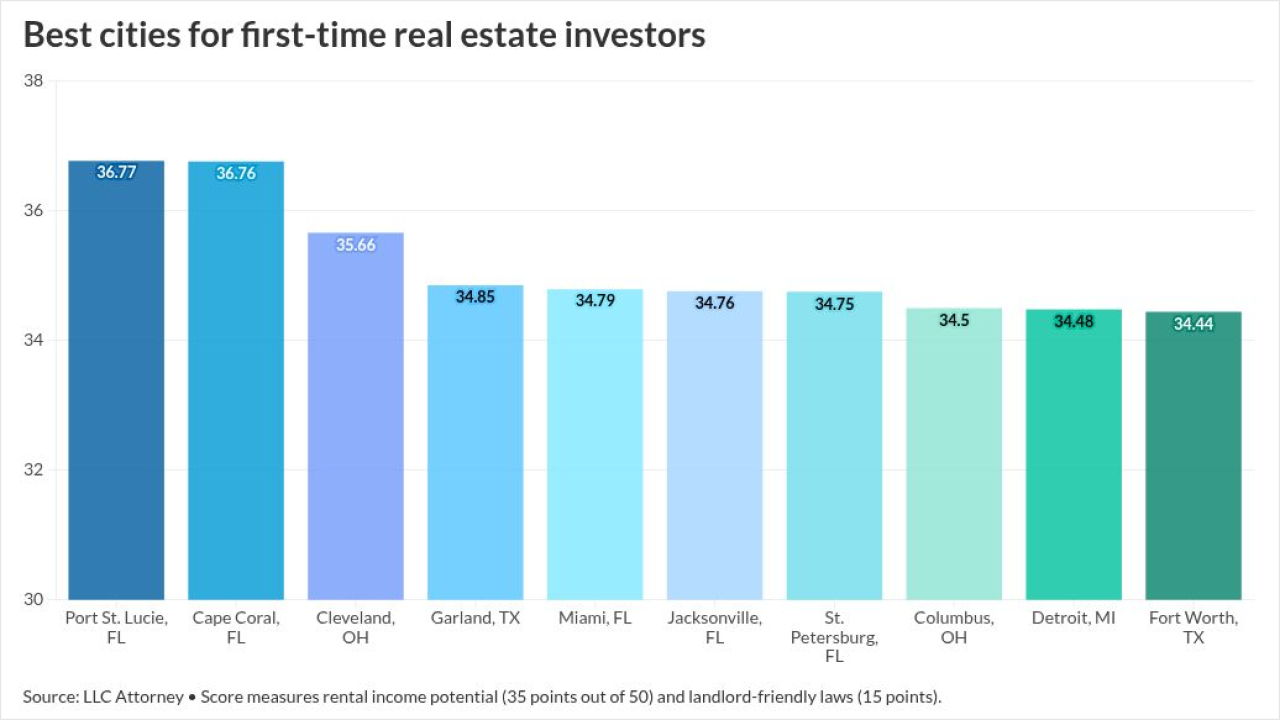Fannie Mae now forecasts mortgage rates to slip back under 6% by the second quarter of 2026 as it elevated its gross domestic product outlook and modified its home sales projections.
The origination forecast, while increased
Furthermore, the Fannie Mae forecast is dated May 12, which was prior to
The 30-year fixed rate mortgage was at 7.06% at that time, according to Zillow; Lender Price data on the National Mortgage News site put the rate at 7.034%, up from 6.974% three hours earlier.
Where mortgage rates are heading
In the new forecast, Fannie Mae sees rates falling to 6.1% in the fourth quarter, dropping to 6% by next March and then at 5.9% for the following two quarters before ending 2026 at 5.8%.
Fannie Mae's May forecast predicts $1.989 trillion in volume this year, with $1.46 trillion coming from purchases. Both are close to, but above Fannie Mae's April outlook.
This compares with
Fannie Mae expects a 27% refinance share this year; the MBA is looking for 39%.
For 2026, Fannie Mae is predicting $2.376 trillion of volume, with $1.598 trillion from purchase activity. This is close to the MBA's $2.386 trillion forecast, with $1.589 trillion in purchase originations.
Fannie Mae is now expecting 4.917 million total home sales in 2025, a year-over-year increase of 3.6% from 2024's 4.746 million. A month ago, it looked for 4.863 million, a 2.5% gain.
GDP for the full year will grow 0.7%, compared with 0.5% in the April forecast. For 2026, it raised the outlook to 2% growth from 1.9%.
How tariffs are likely to impact mortgage lending
Boston Consulting Group laid out three scenarios on how tariffs will impact GDP growth in its first quarter U.S. Mortgage Performance Report.
Considering both U.S.-imposed and retaliatory tariffs, in the best case scenario (which BCG gives a 20% chance of happening), net GDP will grow 1.3%. In the most likely scenario, between the best and worst cases, it predicted 0.6% growth.
For the worst case, at a 35% chance of occurring, BCG expects a 0.7% decline in GDP.
BCG commented on the impact on the mortgage business in each of those developments.
"Mortgage market sustains gradual growth but without boom as rates remain elevated; profits expand in [a] stable market," BCG said about the better case's impact of tariffs on the business.
In the most likely case, which BCG gives a 45% probability of happening, a temporary adverse impact will be felt on growth and margins. The impact in this situation is limited and recovery is relatively quick. Furthermore, "refinance activity acts as a shock absorber" for mortgage lenders.
But for the worst case scenario, BCG expects origination volume to decline, secondary market spreads to widen and mortgage servicing rights valuations also be negatively affected more drastically than in the more likely prediction.
"Demand shocks exceed market's ability to absorb over time; refinance activity curbed as lenders tighten credit boxes and consumer circumstances worsen; risk of instability in MSR/MBS markets," the report said.
The better impact from BCG's tariff scenario will result in
What can mortgage lenders do to offset the impact of tariffs
BCG gave six takeaways for lenders and servicers to consider in planning for the impact of tariffs:
- Enhance scenario planning to account for the heightened period of uncertainty
- Assess your pipeline hedging strategy (coverage ratios, float down policies) to account for potentially higher mortgage fall-out rates
- Leverage data and analytics to take advantage of refinance opportunities within a volatile rate environment
- Deploy proactive workout and modification solutions for loans in geographies likely to be the most impacted by tariffs
- Continue investment in technologies and workflow models that increase operating leverage
- Evaluate additional liquidity buffers to ensure an adequate capacity to handle higher delinquency rates


